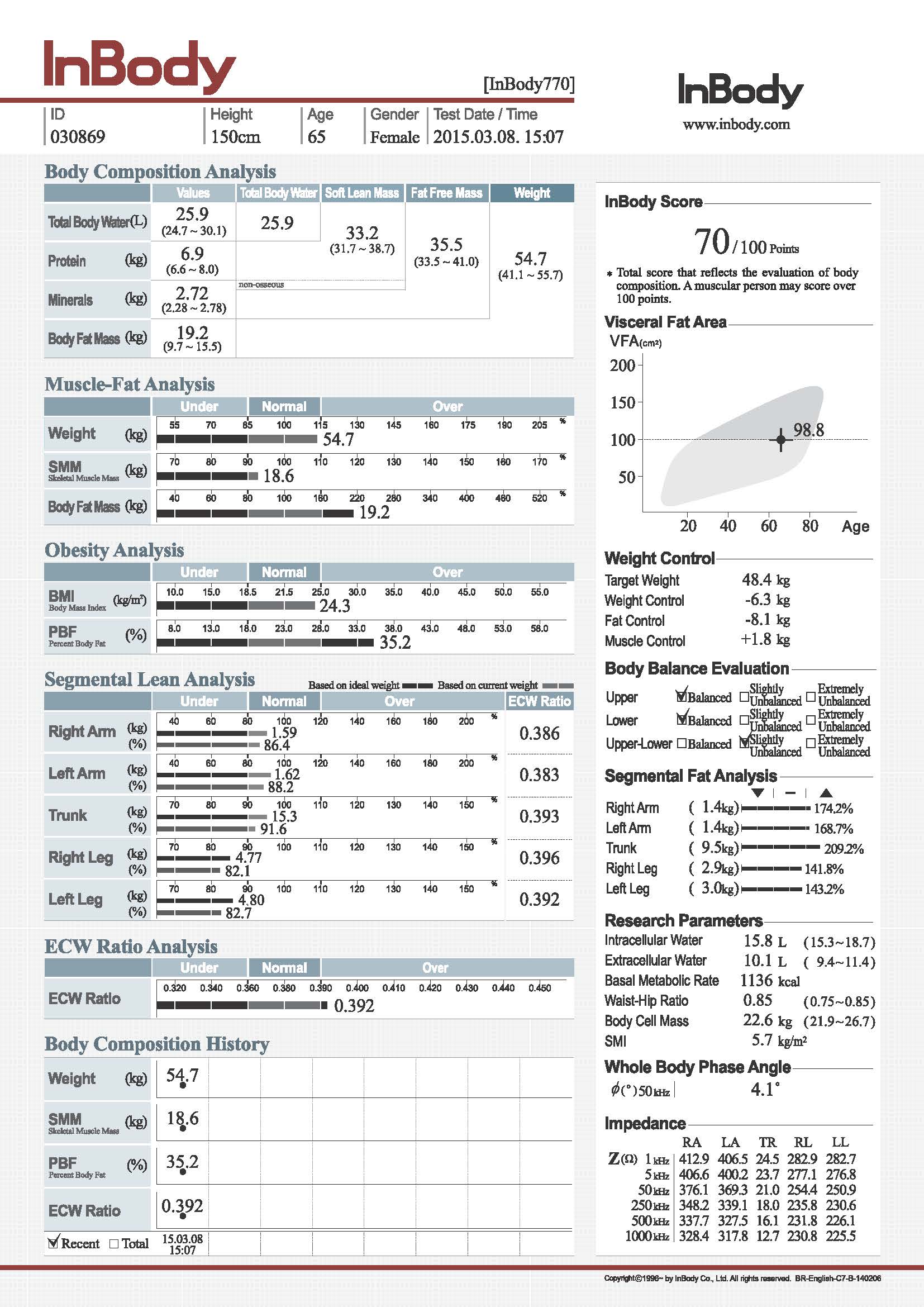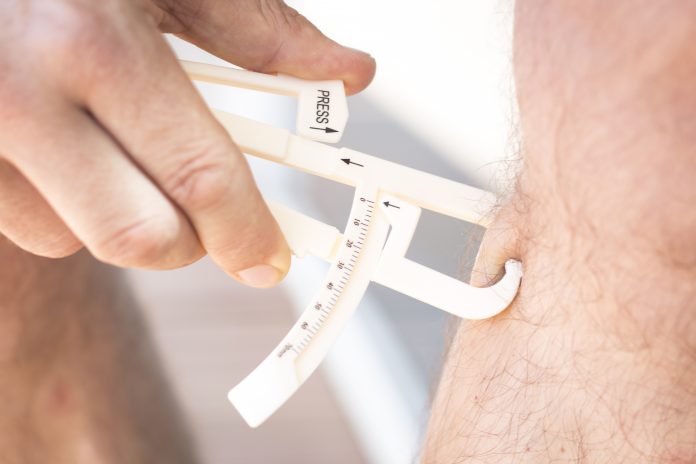InBody Clinical Team describes the relationship between diabetes, one of the most common diseases of the modern age, and muscle mass
Diabetes, well known as a lifestyle-related disease, represents one of the most common diseases of the modern age with an increasing number of patients every year.
According to a survey by the International Diabetes Federation (IDF), 1 in 11 adults (20-79 years) have diabetes (463 million people) (1). This steady increase in diabetes diagnoses is due, in part, to the obesity epidemic. 87.5% of adults with diabetes are overweight or obese according to their Body Mass Index (BMI). However, these findings make it seem like only those with high weight are at risk for diabetes, but that is not the case. In fact, so-called “skinny fat” (Sarcopenia), individuals with a normal or low BMI but a high percent body fat, are at an increased risk to develop diabetes or prediabetes. This is why it is important for those looking to reduce diabetes risk or manage their diabetes to understand their body composition.
What is a balanced body composition?
The term “body composition” means exactly what it sounds like: the components that your body is made up of. Generally speaking, these components can be simply categorised as fat and fat-free mass. As you might expect, your fat-free mass (FFM) is everything in your body that is not fat. The body generally needs a balance of FFM and fat mass to function optimally and maintain positive health. However, this balance is disrupted in many overweight and obese individuals due to excess fat.
In other words, the goal for overweight individuals should not be to simply lose weight; instead, it should focus on improving body composition by reducing fat mass while maintaining or increasing FFM.
Not only does a more balanced body composition make you look leaner, but it can also reduce your risk of diabetes and other obesity-related disorders.
Relationship between muscle mass and Type 2 diabetes (T2D)
Excessive fat mass does not alone increase the risk of diabetes. Various recent research has shown a link between diabetes risk and low muscle mass. The negative effects of Type 2 diabetes (T2D) on muscle can be divided into three categories: fatigue, muscle strength, and muscle mass.
Muscle fatigue
Muscle fatigability refers to the rate at which your muscles become weaker after exercise or movement, and the amount of time it takes for them to recover or return to their full power. Researchers have known for years that muscle fatigability increases with T2D (2). When people with T2D perform an exercise, their muscles lose power faster than those of a healthy person.
Muscle strength
T2D reduces overall muscle strength as well. Even after adjusting for age, sex, education, alcohol consumption, lifetime smoking, obesity, and aerobic physical activity, people with T2D had less handgrip strength than people without it.
Muscle mass
Not only do T2D patients have both reduced muscle recovery and strength, they also start to lose muscle mass. In fact, the longer you have diabetes, the more muscle mass you tend to lose, especially in the legs (3).
InBody results for patients with T2D shows that lower body muscle mass is particularly low.
How building muscle mass reduces risk of T2D
Here’s the good news. If low muscle mass increases the risk of T2D, it is also possible to reduce the risk of Type 2 diabetes by increasing muscle mass and improving body composition. You can take control of your diabetes risk by improving your body composition.
Research has shown that increasing your muscle mass reduces your risk of T2D. In a 2017 study, researchers in Korea and Japan followed over 200,000 otherwise healthy people who had no diabetes or prediabetes at the start of the experiment. After 2.9 years, the participants with more muscle mass were significantly less likely to have T2D (4). In fact, exercise is good for reducing diabetes risk as well as improving diabetic state all on its own. This is because exercise increases the delivery of glucose to our muscle cells. When you exercise, your muscles are exerting more than their normal energy demand, thus creating a higher need for energy/glucose to fuel them. In fact, resistance training has been shown to be particularly beneficial for T2D (5). Larger muscles require more energy, therefore, the leg muscles, being the largest muscles in the body, are especially important for glucose uptake and regulation. Therefore, targeting the legs with resistance exercise may improve diabetes risk factors as well as promote physical function. As mentioned previously, those who are diagnosed with T2D often lose the most muscle mass in the legs, making leg day all the more important to maintain and build muscle mass to reduce the risk of diabetes.
Although Type 2 diabetics are insulin-resistant, this increased demand for glucose from exercise helps to increase the efficiency of insulin to get glucose into the muscle cells, improving their diabetic state overall!

Takeaways
The major takeaway here is that diabetes is not only a disease that has to do with weight but high body fat and low muscle mass both increase diabetic risk.
The main goal to reduce this risk or improve diabetic state is to improve body composition. This can be done by reducing body fat for those who are overfat, as well as building muscle for those who have low skeletal muscle mass.
What’s next?
The best thing to do in order to have a better idea of your health risks and create attainable goals for yourself is to get your body composition tested. From there, you can make adjustments to your lifestyle to alter your body composition, if necessary, to reduce your risk for diabetes and other conditions. If you already have T2D or prediabetes, focus on losing fat while engaging the muscles with exercise.
See what you’re made of and get started on the path to a healthier life today!
References
(1) “IDF Diabetes Atlas 9th” International Diabetes Federation.
(2) Mechanisms for the increased fatigability of the lower limb in people with type 2 diabetes, Senefeld J. et al., J Appl Physiol (1985). 2018 Aug 1;125(2):553-566.
(3) Reduction of Skeletal Muscle, Especially in Lower Limbs, in Japanese Type 2 Diabetic Patients With Insulin Resistance and Cardiovascular Risk Factors, Yuji Tajiri et al., Metab Syndr Relat Disord. 2010 Apr;8(2):137-42.
(4) Relative muscle mass and the risk of incident type 2 diabetes: A cohort study, Sungwoo Hong et al., PLoS One. 2017; 12(11): e0188650.
(5) A randomized controlled trial of resistance exercise training to improve glycemic control in older adults with type 2 diabetes, Castaneda C. et al., Diabetes Care. 2002 Dec;25(12):2335-41.
Please note: this is a commercial profile.









What is the best thing to do to increase muscle mass for a person over70 years of age with type 1 diabetes.